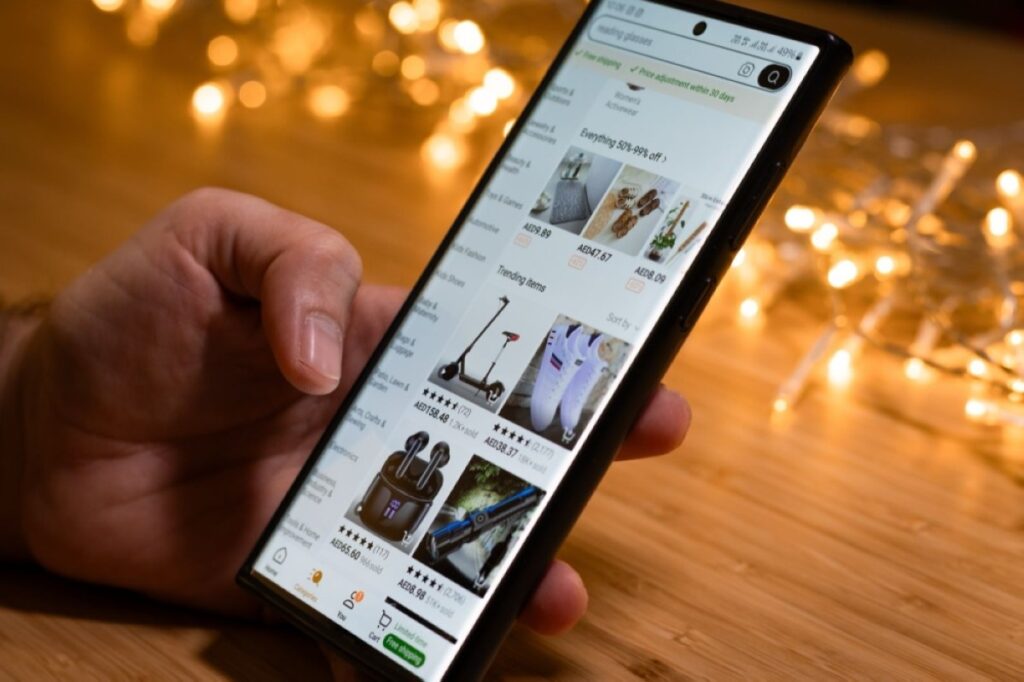Gen X and Boomers are Temu’s most frequent users, placing twice as many orders as Gen Z
By Dena Alfadhli
KUWAIT: As Hamad scrolls through Facebook, his feed is flooded with ads from online marketplaces offering steep discounts on everything from phone chargers to quirky household gadgets. Intending to buy something specific for his desk, Hamad clicks on one of the ads. But minutes later, his cart is filled with an odd mix: knick-knacks, car accessories, stationery, and home tools. “Basically,” he shrugs, “anything cheap and interesting.”
Hamad, who asked to be identified by a pseudonym, isn’t alone. In an era of hyper-stylized influencer culture—dominated by TikTok Shop and Instagram’s sleek storefronts—online marketplaces are capturing a different demographic: older shoppers. Specifically, Gen X and Baby Boomers, many of whom are discovering a renewed joy in bargain hunting.
Temu is just one example of this. According to US-based research firm Attain, as reported by Bloomberg, Gen X and Boomers are Temu’s most frequent users, placing an average of six orders a year—twice as many as Gen Z shoppers. “For me, it’s like falling into a rabbit hole,” Hamad says. “You find things you didn’t even know existed—and suddenly feel like you need them.”
What appears to be harmless impulse shopping reflects something deeper: a fascination—especially among older men—with novelties that promise utility at a low cost. Arjun, a 56-year-old user in Kuwait, recounts buying oddly specific gifts: a mouthpiece that mimics birdsong and a spinning phone attachment for video effects. “Anything you want, it’s on there,” he says. “Tell me what you’re looking for, and I’ll find it.”

This photo shows a collection of fridge magnets, similar to those collected by Hamad and some Gen X men.

This screenshot from Temu shows a variety of bird whistle mouthpieces, one of many knick-knacks found on the popular online marketplace.
Young people unfazed
While Gen Xers fall into the thrill of discovery, younger generations remain more skeptical. “It just feels like a knockoff version of Amazon,” says Noor, a Kuwaiti college student. “It’s convenient, sure, but not that exciting. It reminds me of SHEIN.”
Sara, a millennial user in Kuwait, says she feels misled by Temu, noting suspicious price fluctuations. “I’ve noticed that when I leave items in my cart, the prices creep up slightly the next day,” she says, suspecting the app is nudging her to meet the platform’s KD 14 minimum for checkout.
According to NYU psychology professor Emily Balcetis, older shoppers are less aware of how platforms use gamification to drive spending. She told Bloomberg that features like flash deals, daily check-ins, and spin-to-win promotions are more effective on them than on younger digital natives, who tend to see through the tactics—or ignore them altogether.
Other young buyers use the app occasionally, but their purchases tend to be less random and more intentional. Reina, a Gen Z user, said she used the app to buy decorations for a New Year’s event, but hasn’t returned since—explaining that she simply doesn’t find much she needs on the platform.
So, what’s driving this generational divide in online shopping behavior? For many men in Gen X, bargain hunting is more than just saving money—it taps into an ingrained role as household provider. Omar, a father of three, jokes that he’s constantly scanning for discounts. “My daughters go through shampoo like they are drinking it,” he says. “If there’s a 2-for-1 deal, I’m buying it.”
A 2022 study titled Sex Differences in Money Pathology in the General Population supports this. It suggests that men are more likely to associate shopping habits with providing for others, even when that leads to over-purchasing. Hamad also admits he checks ClickFlyer, a website aggregating local promotions, multiple times a day. “If I skip a day, I feel like FOMO,” he says. “Last week, I bought olive oil even though we had several bottles at home—just because it was on sale.” His wife, he says, doesn’t share the enthusiasm. “She gets frustrated when things pile up at home.
Nostalgia’s role
Having grown up in an era shaped by coupon clipping, mail-order catalogs, and the thrill of a “smart buy,” Gen X men may find Temu appealing not just for its prices, but for the nostalgia it evokes. Beyond flashy bargains and gamified discounts that echo the past, Temu also offers antique and vintage items that tap into those memories. Arjun, for example, says he’s purchased vintage timepieces on the app—items he describes as “not available in the normal market.”
A 2023 Polish research paper titled Nostalgic Consumer Trends and Nostalgia Marketing found that 55 percent of Gen X respondents reported feeling emotionally connected to the 1990s—highlighting how nostalgia can drive consumer choices. Fred Davis, a professor at the University in California who helped establish nostalgia as a serious academic subject in sociology and cultural studies, expanded on this idea in his book Yearning for Yesterday. In it, he argues that nostalgia becomes especially potent in midlife, when people seek continuity and meaning through physical tokens.
That behavior isn’t exclusive to shopping apps. Many of these men describe long-running collecting habits. Hamad proudly displays a fridge magnet collection from places he’s travelled “worth thousands.” But it doesn’t stop there. He also admits to collecting interesting looking water bottles, newspaper clippings, boarding passes, and even napkins he gets from restaurants that have sentimental value to him. Omar also admits to stockpiling gemstones for years.
Straddling both analog and digital eras, Gen X consumers often display shopping and collecting habits rooted in a desire to stay connected to their pre-digital identities. Temu—with its endless assortment of quirky and nostalgic items, digital coupons and redeemable gifts —offers a kind of comfort, grounding them in a familiar sense of utility and discovery.

